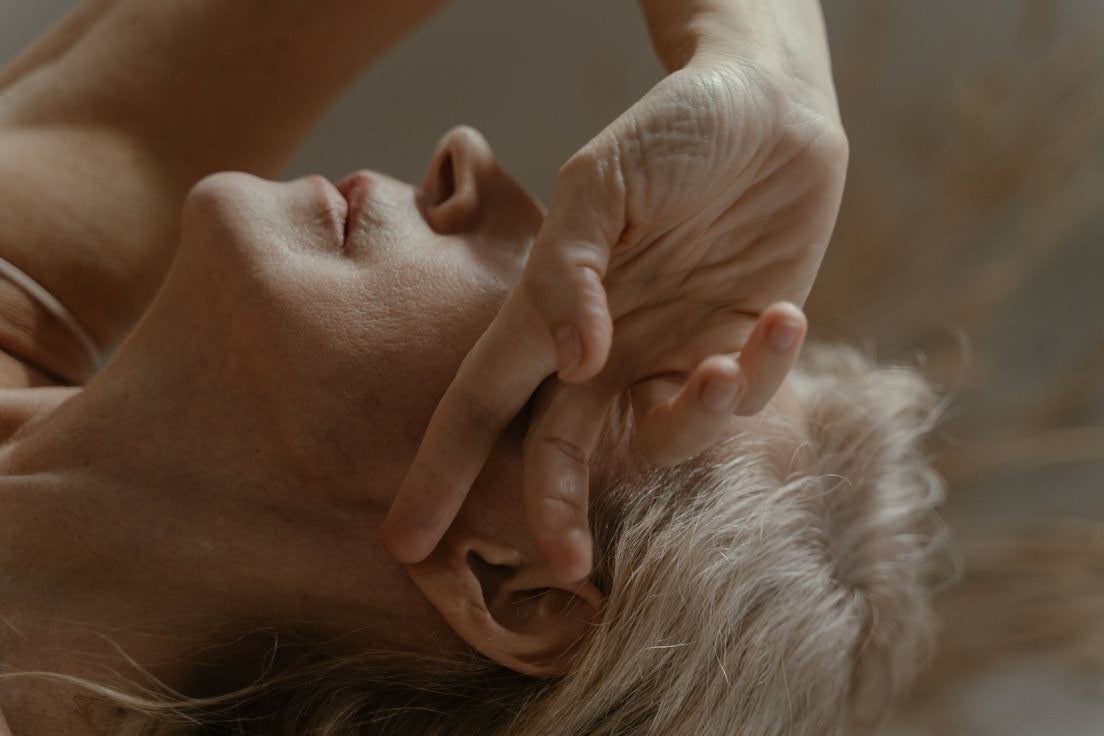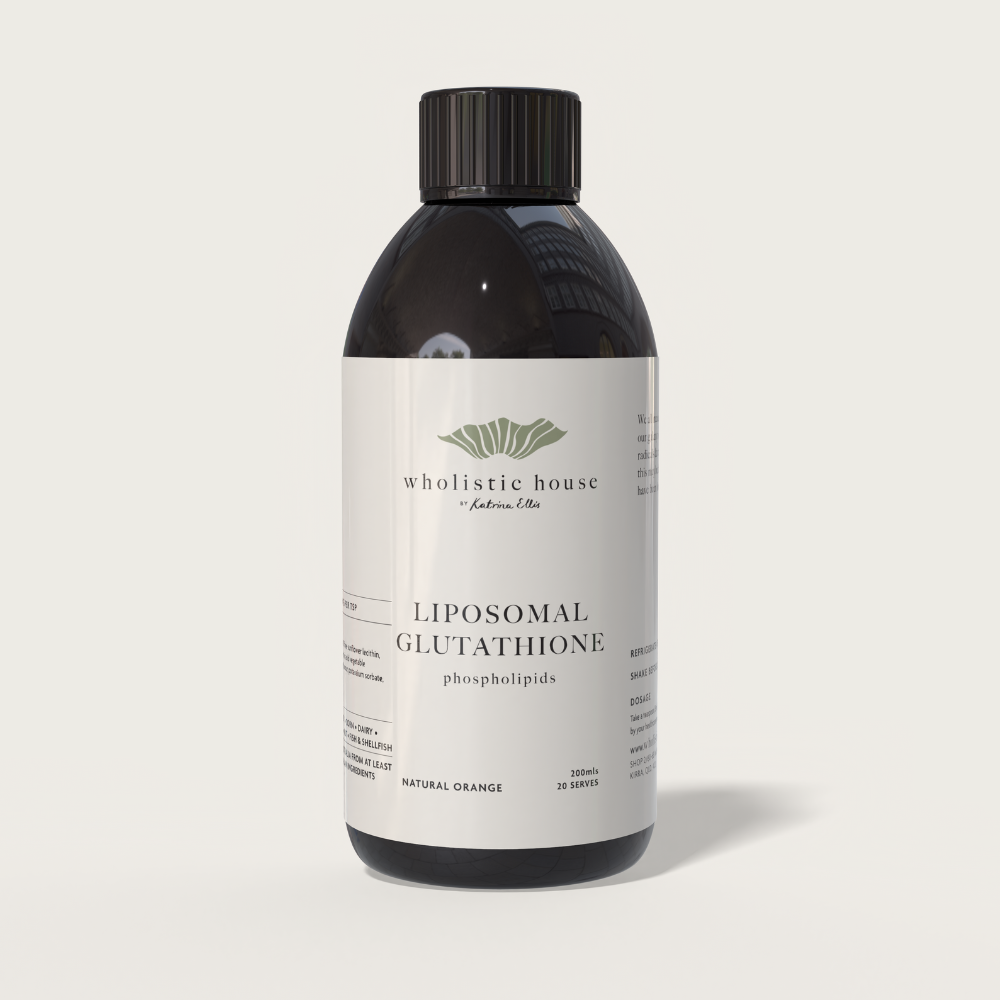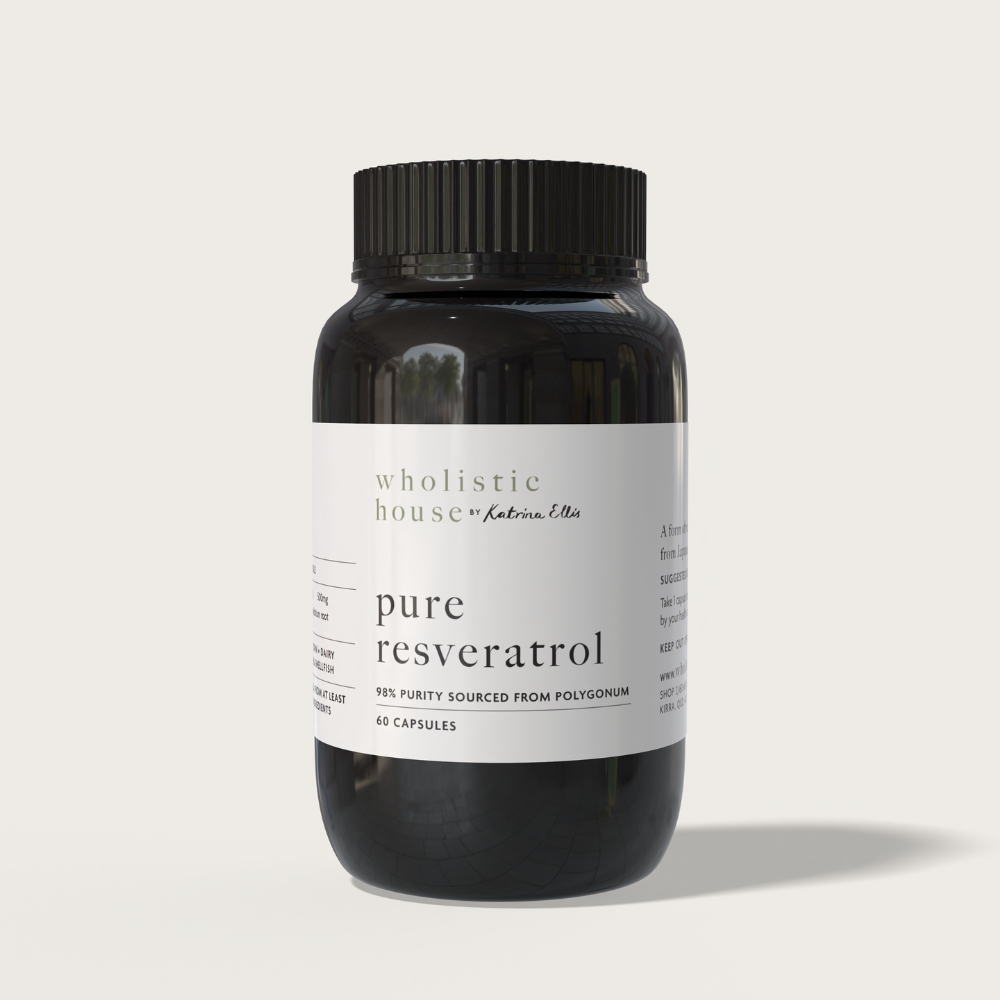
Biohacking for Longevity: Proven Strategies to Slow Aging and Boost Energy
Naturopathic Doctor, Iridologist, Clinical Herbalist & Best-Selling Author
Longevity isn't just about living longer it's about living better. With biohacking, we now have countless natural tools to optimise our body’s biological systems, promote vitality, and slow aging at a cellular level. In this blog, I will cover some of the key pillars of modern longevity and maintaining exceptional cellular health, which I have successfully applied in my clinical practice for three decades.
These include:
Free Radicals and How to Defend Against Them
Longevity Genes & How to Optimise
NAD+ a hidden superstar
Fasting for Longevity
Longevity Power Foods
And the best bio hacks, anti-aging supplements, and lifestyle practices to support each of these pillars.
Free Radicals & How to Defend Against Them
Free radicals are unstable oxygen-containing molecules that damage cells, proteins, and DNA. This leads to oxidative stress, which accelerates the aging process and increases the risk of disease. The body produces them naturally through metabolism and exposure to toxins, alcohol, cigarettes, heavy metals, poor diet, processed foods, UV light, and pollution.
Common & Harmful Free Radicals
These are some of the most damaging and well-known free radicals known to advance the ageing process:
- Superoxide anion (O₂⁻): Often made during metabolism, contributes to oxidative stress and inflammation.
- Hydroxyl radical (•OH): Extremely reactive; damages DNA, proteins, and lipids.
- Peroxynitrite (ONOO⁻): Damages blood vessels and brain tissue; linked to cardiovascular and neurological diseases.
- Singlet oxygen (¹O₂): Formed via UV light exposure; accelerates skin aging.
- Lipid peroxyl radicals (LOO•): Attack cell membranes and DNA

Where do Free Radicals Come From?
Free radicals are unstable molecules that can cause cellular damage and accelerate the aging process. Understanding where they come from both inside and outside the body can help you take steps to reduce your exposure and support your antioxidant defences.
Free radicals are generated internally as part of normal metabolic processes and accidentally as byproducts of stress, poor health, or environmental exposure. Below are some of the most common sources of free radicals, starting with those generates within the body and then moving to external drivers:
Mitochondrial Energy: When your cells produce ATP (energy), approximately 1–2% of this process naturally generates free radicals, such as superoxide and hydroxyl radicals.
Supportive nutrients: Coenzyme Q10 (CoQ10), Alpha-Lipoic Acid, and Superoxide Dismutase (SOD).
Poor Digestion: Digestive inefficiency can lead to the production of reactive oxygen species (ROS) from leaky gut, dysbiosis, and fermentation. Pancreatic or bile insufficiency can also increase the production of superoxide anions and hydroxyl radicals.
Supportive strategies: Digestive enzymes, probiotics, and gut-healing nutrients.
Immune Response and Inflammation: Your immune cells produce free radicals to fight off infections. However, chronic activation, such as during autoimmunity or viral exposure, can damage healthy tissues.
Key antioxidants: Vitamin C, Curcumin, Selenium, N-Acetylcysteine (NAC), and Glutathione.
Liver Detoxification: The cytochrome P450 pathway in your liver is responsible for metabolizing toxins and hormones. During this process, large amounts of free radicals can be produced if your detox pathways aren’t supported.
Protective compounds: Glutathione, Milk Thistle (Silymarin), and Selenium.
Neurotransmitter Breakdown: The breakdown of dopamine, serotonin, adrenaline, and noradrenaline by the MAO and COMT enzymes produces hydrogen peroxide and aldehydes.
Supportive nutrients: Active forms of Folate (5-MTHF), Vitamin B6, Vitamin B12, and polyphenols (e.g., green tea extract, resveratrol).
Enzymatic Oxidation: Certain metabolic pathways, like purine metabolism (which forms xanthine oxidase) and lipid metabolism (leading to lipid peroxides), are natural but also produce damaging free radicals if unchecked.
Apoptosis and Cell Turnover: As part of normal cell death and renewal, free radical are made, especially during inflammation, tissue remodelling, or regeneration.
Psychological and Physiological Stress: Chronic stress activates the HPA axis, leading to increased cortisol and free radical production
Supportive Nutrients: Magnesium, L-Theanine, Rhodiola, and Ashwagandha help regulate stress and reduce oxidative load.
External free radicals from environmental and lifestyle exposure introduce oxidative stress into the body.
Some of these include:
UV Radiation (Sun Exposure): Exposure to sunlight generates singlet oxygen, a highly reactive free radical that damages skin cells, collagen, elastin and DNA
Top skin protectants: Beta-Carotene, Astaxanthin, Lycopene, Zinc, Vitamin C, and Vit E.
Cigarettes: Generate over ten free radicals per puff, which can cause oxidative stress damage to the lungs, blood vessels and DNA while depleting Vitamin C and glutathione.
Air pollution: From diesel exhausts, ozone, heavy metals and industrial emissions generates vast amounts of free radicals that trigger inflammation and other diseases.
Alcohol: The Metabolism of this generates acetaldehyde, a reactive compound that increases reactive oxygen species (ROS). It also depletes glutathione and other enzyme systems.
Poor-quality Processed Foods: High in trans fats, oxidised oils, refined sugars, and artificial additives, promote lipid peroxidation and the production of reactive oxygen species (ROS) during metabolism.
Heavy Metals:
Including lead, mercury, cadmium, and arsenic, promote oxidative tissue damage.
Toxins and Chemicals: Found in pesticides, herbicides, plastics, BPA, solvents, cleaning products and others burden the liver, generating vast amounts of free radicals.
Medications and Drugs: Like NSAIDs, chemotherapy, antibiotics and others generate free radicals via liver detoxification, microbiome destruction and mitochondrial dysfunction.
Radiation and Electromagnetic Fields (EMF): Including X-rays, CT scans, radiation therapy, and exposure from Wi-Fi, 5G, and phones, can damage DNA strands and generate reactive oxygen species (ROS) molecules.
Excessive Physical Exercise: Without recovery and any antioxidant support generates free radicals via mitochondrial respiration and tissue stress.
Your Biohacking Defence: Antioxidants
Antioxidants neutralize free radicals, protecting cells from damage. Boosting the body’s antioxidant defences is a cornerstone of enhancing longevity.
Some of My Fav Antioxidants Include:
- Vitamin C: Regenerates other antioxidants; protects skin and blood vessels.
- Vitamin E: Lipid-soluble; protects cell membranes.
- Glutathione: A master antioxidant that is made in the liver (can be supported with NAC or liposomal glutathione).
- CoQ10: Essential for mitochondrial energy and scavenging free radicals.
- Alpha-lipoic acid (ALA): Regenerates other antioxidants
- Polyphenols: Such as resveratrol and pterostilbene, vigilantly guard against free radical attack.
Longevity Genes: Activating Your Cellular Fountain of Youth
Scientists have identified several genes that regulate the aging process, including:
- SIRT1-7: NAD-dependent enzymes that regulate metabolism, inflammation, mitochondrial health and DNA repair. Can be enhanced with fasting, NAD boosters, exercise, resveratrol and cold exposure.
- FOXO3: Master regulator of stress resistance, DNA repair, autophagy and apoptosis - strongly found in a centenarians. If you have a poor allele here, you can improve with fasting, polyphenols such as resveratrol, calorie restriction and excerse.
- AMPK: A metabolic master switch activated during low-energy states (like fasting).
- APOE: Apoe2 is linked to longevity and cognitive protection, and Apoe4 is linked to an increased risk of Alzheimer’s and cardiovascular disease.
If you want to learn more about your longevity genes and how to optimise them with nutrition and supplements, don't hesitate to contact the clinic on +61 07 55363113. We would be happy to arrange a TrueAge DNA genetics test for you.
Bio Hacking Supplements, Herbs & Medicinal Mushrooms to Activate:
- Resveratrol and Pterostilbene: Mimics calorie restriction; activates SIRT1 and FOX03
- Super PQQ (Pyrroloquinoline Quinone): A powerful antioxidant that promotes mitochondrial biogeneis, protects braincells, reduces oxidative stress and enhances energy.
- NMN or NR (NAD+ precursors): Fuels sirtuin activity and DNA repair. NMN (Nicotinamide Monoucleotide) and NR (Nicotinamide Riboside) are both converted into NAD+ in the body, helping restore this critical coenzyme as it declines with age. Supplementation has been shown to enhance mitochondrial function, increase energy metabolism, and potentially prolong lifespan in animals' models.
- Berberine: Activates AMPK and balances blood sugar.
- Fisetin & Quercetin: Helps to clear damaged "zombie" cells.
- Astragalus root (TA-65): Supports immune function and activated telomerase, an enzyme that protects telomeres.
- Curcumin (from Turmeric): A potent anti-inflammatory antioxidant that supports brain health, reduces oxidative stress, and may help delay age-related diseases.
- Reishi: Know as the "mushroom of immortality", it enhances immune function and reduces inflammation.
- Lion's Mane: Promotes neurogenesis (growth of new neurons), supports cognitive function and protects against age-related cognitive decline.
- Cordyceps: Enhances oxygen utilization and cellular energy (ATP), often used for improving endurance and vitality in aging adults.

Best Exercises:
- High-Intensity Interval Training (HIIT): Increases mitochondrial health and NAD+ levels.
- Strength training: Builds muscle, protects insulin sensitivity, and regulates hormone balance.
- Zone 2 cardio (low-intensity endurance training): Enhances metabolic flexibility and mitochondrial efficiency.
Lifestyle Practices:
- Cold exposure (ice baths/showers): Boosts mitochondrial resilience.
- Intermittent fasting: Activates AMPK, increases autophagy, and raises NAD+.
- Near-Infrared (NIR) Therapy: Often delivered through red light panels at the correct frequency, has been shown to stimulate mitochondrial activity, reduces inflammation, and promote tissue repair.
- Lack of sleep ages you faster: Sleep is critical for cellular repaire, hormonal balance, and brain detoxification. Research shows that chronic sleep deprivation can accelerate biologicals aging by shortening telomeres, increasing inflammation and impairing mitochondrial function. Just one week of poor sleep can make your cells behave like those of someone biologically several years older.
- Meditation, Yoga and Deep Breathing Techniques: Chronic stress elevates stress hormones like cortisol, disrupting hormonal balance, damaging mitochondria and impairing immune function. Over time, this leads to increased inflammation, shortened telomeres, and faster cellular aging. Regular meditation and mindfulness can balance all of these ageing processes.
NAD+: The Fuel for Youthful Cells
NAD+ is a molecule that fuels mitochondrial function, DNA repair, and longevity enzymes like sirtuins. It declines significantly after age 30. This molecule determines how well your body repairs itself, and boosting levels can slow down ageing, improve brain function and enhance metabolism.
How to Boost NAD+:
- Consume NAD-boosting nutrients:like niacin (vitamin B3), tryptophan, and magnesium. These are found in food like turkey, wild salmon, avocados, whole grains and leafy greans.
- NAD+ precursors: NMN and NR are well-studied for their ability to increase NAD+ levels.
- Use Sirtuin activators: Resveratrol and pterostilbene work with NAD+.
- Practice fasting: Elevates NAD+ naturally via AMPK activation.
- Exercise regularly: Especially internal training and resistance workouts.
Fasting: Nature’s Cellular Reboot
Fasting activates autophagy, your body’s natural recycling program, and shifts cells into repair mode. It also enhances insulin sensitivity, lowers inflammation, boosts mitochondrial health and neurotropic factors for cognitive function, stimulates ketone production, and promotes stem cell regeneration. There are many different fasting protocols, including the 16:8 intermittent fasting protocol, which allows you to eat within an 8-hour window, 24-hour fasts done one or two times weekly, and prolonged fasting for three days or longer. Prolonged water fasting can trigger deep autophagy and enhance stem cell production; however, it is often best done under medical supervision.
Longevity Power Foods
Eating a nutrient-rich, anti-inflammatory diet is foundational for healthy aging and one of the best natural ways to live a longer life.
- Leafy Greens: spinach, rocket, Swiss chard and romaine lettuce are rich in folate, magnesium and chlorophyll
- Cruciferous vegetableslike broccoli, cauliflower, kale, bok choy and brussels sprouts are rich in sulforaphane to activate NRF2 – the master detox and antioxidant switch
- Olive Oil: First cold pressed is high in oleic acid and polyphenols to reduce inflammation
- Dark Chocolate: Rich in flavonoids, magnesium, and polyphenols, which boost nitric oxide and blood flow.
- Pomegranate: supports mitophagy and microbiome health
- Fatty fish: rich in omega-3s to reduces inflammation and cardiovascular risk
- Berries: high in polyphenols and brain-boosting antioxidants
- Nuts & seeds: longevity-linked in multiple cohort studies
- Mushrooms: lion’s mane, reishi, and shiitake support immunity and brain health
- Grass-fed meats: Rich in omega-3 fatty acids, conjugated linoleic acid (CLA), and key nutrients like B vitamins, iron and zinc to support muscle maintenance, cognitive health and inflammation, key pillars of health aging.
- Fermented foods: improve gut microbiome, which influences immune and mood regulation and DNA repair
- Herbs like rosemary, oregano and thyme are super rich in polyphenols
- Mineral-rich hydrogen water: Known for its antioxidant and anti-inflammatory properties, hydrogen-rich water may help reduce oxidative stress, protect mitochondrial health, and improve cellular signalling. Some studies suggest it could aid in preventing age-related diseases by neutralizing free radicals.

Biohacking for longevity is about consistency, not perfection. It involves eating clean, sleeping well, staying active, and utilising tools such as powerful supplements, the right water, fasting, and cold or hot exposure to support your body’s natural intelligence.
My fav wholistic house picks include
NAD + EnerG
Liposomal C Enhanced with Lipoic Acid
Nature's Radiance Bundle
In love, health and longevity,

Referenced products










Leave a comment
This site is protected by hCaptcha and the hCaptcha Privacy Policy and Terms of Service apply.
All comments are moderated before being published.